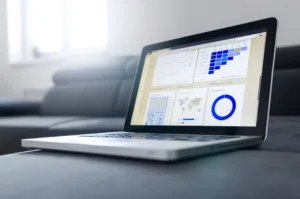
German state integration ministers are pushing for a more constructive public discourse on immigration and increased funding for language and integration programs. This initiative aligns with broader policy reforms aimed at addressing labor shortages and streamlining skilled migration processes. The proposed changes, including the Opportunity Card (Chancenkarte) and updates to the Skilled Immigration Act, reflect Germany’s urgent need to fill 1.6 million job vacancies, particularly in healthcare, IT, and construction1, 2.
Policy Reforms and Visa Trends
Germany’s Opportunity Card, introduced in 2024, uses a points-based system to fast-track visas for non-EU applicants with qualifications in high-demand sectors. Applicants must score at least six points based on criteria such as language proficiency, work experience, and proof of financial stability (€1,027/month savings). In 2023, 177,000 national visas were issued, with projections exceeding 200,000 in 20243. The Skilled Immigration Act further eases barriers by recognizing foreign vocational qualifications with two years of experience, even without full German equivalency4.
Labor Market and Integration Programs
Germany’s aging population and declining birth rates have created a critical labor gap, with 400,000 unfilled positions in healthcare alone. To address this, the government has allocated €1.5 billion from the EU’s Asylum, Migration, and Integration Fund (AMIF) for language courses and expanded Welcome Centers in Berlin and Munich5. However, administrative delays and housing shortages—such as Berlin’s 200,000-unit deficit—remain significant hurdles6.
Political and Public Sentiment
Chancellor Olaf Scholz has framed migration as essential for economic growth, stating,
“Migration is essential to maintain prosperity”
7. However, opposition parties, including the far-right AfD, link immigration to strained public services, fueling polarization. With 19% of Germany’s population foreign-born, debates over integration and resource allocation are likely to dominate the 2025 elections8.
Global Comparisons and Future Projections
Germany’s reforms mirror efforts in countries like Australia, which replaced its Temporary Skill Shortage (TSS) visa with a Skills in Demand program. Key differences include Germany’s focus on permanent residency pathways versus Australia’s temporary visas. Both nations face housing pressures, but Germany’s political response is complicated by rising far-right influence9. Analysts project Germany will need 400,000 skilled migrants annually to sustain economic growth10.
Conclusion
Germany’s migration reforms aim to balance labor demands with integration challenges, but success hinges on addressing bureaucratic inefficiencies and housing shortages. As global competition for skilled workers intensifies, Germany’s ability to refine its policies will determine its long-term economic resilience.
References
- “Germany expands Welcome Centers to streamline migrant integration,” The Local DE, 2024.
- “Skilled Immigration Act 2024: Key Changes,” Bundesregierung, 2024.
- “ETIAS and Germany’s Visa Reforms,” ETIAS, 2025.
- “EU Integration Portal: Qualification Recognition,” 2024.
- “Labor Market Report 2024,” BMAS, 2024.
- “Germany’s Housing Crisis and Migration,” Associated Press, 2024.
- “Scholz on Migration and Economic Growth,” Bloomberg, 2024.
- “Australia’s Visa Reforms: A Comparison,” SBS News, 2024.
- “Germany’s Far-Right and Immigration Debates,” BBC, 2024.
- “Interior Ministry on Migration Policy,” BMI, 2024.





